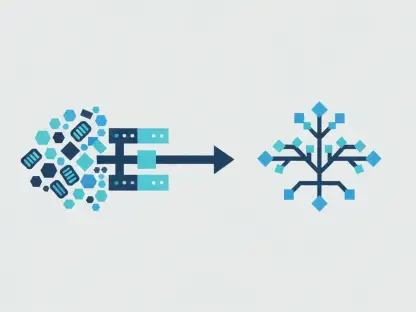The “3D Cell Culture Market” is a pivotal segment within biotechnology, focusing on creating and using three-dimensional environments for cell culture. Unlike traditional two-dimensional cultures, this method more accurately mimics the natural tissue context, providing more relevant physiological data for various applications, including drug discovery, cancer research, tissue engineering, and personalized medicine. The market, valued at USD 1.64 billion in 2023, is projected to reach USD 4.05 billion by 2029, growing at a compound annual growth rate (CAGR) of 16.26%. This impressive growth highlights the increasing adoption and expanding applications of 3D cell culture technologies across various fields.
Factors Driving Market Growth
Increasing Adoption of 3D Cell Culture Technologies
The remarkable growth rate of the 3D cell culture market can be attributed to the increasing adoption of these technologies across multiple domains. Traditional two-dimensional cell cultures often fail to replicate the complex interactions and architecture found in natural tissues, resulting in less accurate data. In contrast, 3D cell cultures provide a more physiologically relevant environment, significantly enhancing the accuracy of research outcomes. This advantage has led to their widespread adoption in crucial areas such as drug discovery, where they help in identifying more effective treatments and reducing the likelihood of costly late-stage failures. Similarly, in cancer research, 3D cell cultures enable more accurate modeling of tumor environments, leading to better understanding and treatment strategies.
Furthermore, tissue engineering is another significant area benefiting from the enhanced accuracy and relevance of 3D cell cultures. By providing a more natural environment for cell growth and development, these cultures help create more effective tissue models for research and therapeutic purposes. As researchers and industry professionals recognize these advantages, the adoption of 3D cell culture technologies continues to expand, driving market growth and fostering innovation in various biomedical fields.
Expanding Applications in Biomedical Research
The expanding applications of 3D cell culture technologies are a crucial factor driving market growth. These technologies are increasingly being utilized in personalized medicine, where they enable the development of patient-specific models for testing drug responses and tailoring treatments. By better mimicking the natural tissue environment, 3D cell cultures allow researchers to understand individual variations in drug responses, facilitating the creation of more effective, personalized treatments. This approach is particularly valuable in oncology, where it helps to identify the most suitable therapies for individual patients based on their unique tumor characteristics.
In addition to personalized medicine, 3D cell cultures are playing a crucial role in regenerative medicine. These technologies are used to create bioengineered tissues and organs for transplantation, addressing the growing need for effective and reliable solutions to organ failure and tissue damage. By providing a more relevant environment for cell growth and interaction, 3D cell cultures enhance the development of bioengineered tissues and organs, offering new hope for patients and paving the way for significant advancements in regenerative medicine. The expanding range of applications for 3D cell culture technologies underscores their potential to revolutionize various areas of biomedical research and therapy development.
Competitive Landscape
Major Market Players
The global 3D cell culture market is highly competitive, with major companies such as Corning, Greiner Bio-One International GmbH, Merck KGaA, Tecan Trading AG, and Thermo Fisher Scientific leading the way. These companies are investing heavily in research and development (R&D) to advance 3D cell culture technologies and maintain their competitive edge. By continually improving their products and exploring new applications, these market leaders can offer more sophisticated and effective solutions for researchers and clinicians. Strategic partnerships, mergers, and acquisitions are common strategies employed by these companies to strengthen their market positions. Collaborations with academic institutions and research organizations are particularly prevalent, as they allow companies to leverage external expertise and drive innovation in 3D cell culture technologies.
For example, Corning is a notable player in the market, significantly investing in R&D to advance 3D cell culture technologies. Corning’s commitment to innovation is evidenced by its collaborative efforts with academic and research entities to explore novel applications and refine existing products. Among Corning’s prominent products is Matrigel Matrix, a gel-like substance derived from extracellular matrix proteins. This product simulates natural tissue architecture, fostering cell growth and differentiation, and is widely utilized in research to create physiologically pertinent models for studying cellular behaviors and drug responses. These efforts by major companies highlight the dynamic and competitive nature of the 3D cell culture market, driving its growth and evolution.
Role of Smaller Firms and Startups
In addition to the major players, numerous smaller firms and startups are also contributing to the market’s growth. These companies often focus on niche areas within the 3D cell culture market, developing innovative products and technologies that address specific research needs. By targeting specialized areas, smaller firms can offer unique solutions that complement the offerings of larger companies, enhancing the overall capabilities of the market. Collaborations with academic institutions and research organizations are prevalent among these smaller firms, as they enable them to leverage external expertise and drive innovation.
For instance, smaller firms and startups are at the forefront of developing new scaffold-free techniques, microfluidics-based systems, and high-throughput screening methods, which are reshaping the landscape of 3D cell culture technologies. By focusing on these niche areas and forming strategic partnerships, these companies can bring novel products to market and expand the range of available 3D cell culture solutions. This dynamic interplay between major companies and smaller firms fosters a competitive and innovative market environment, driving the continuous advancement of 3D cell culture technologies and applications.
Regional Market Distributions
North America
North America leads the global 3D cell culture market, accounting for over 42% of the market share in 2023. The region’s dominance can be attributed to its advanced biotechnology sector and substantial investments in research and development. The presence of leading biotech and pharmaceutical companies in North America, particularly in the United States, bolsters the region’s market strength. The robust funding for academic and clinical research further supports the development and adoption of 3D cell culture technologies. This strong foundation of innovation and investment has positioned North America as a key player in the global 3D cell culture market.
The United States, in particular, has a well-established infrastructure for biotechnology research and commercialization. This infrastructure includes top-tier universities, research institutions, and a thriving startup ecosystem, which collectively drive advancements in 3D cell culture technologies. Additionally, supportive government policies and regulatory frameworks facilitate the development and commercialization of new technologies. This conducive environment encourages collaborations and partnerships between academic institutions, research organizations, and industry players, further accelerating the adoption and growth of 3D cell culture technologies in North America.
Europe
Europe also plays a significant role in the 3D cell culture market, with countries like Germany and the United Kingdom being frontrunners in biotechnology and pharmaceutical research. The region benefits from a well-established research infrastructure and strong collaborations between academic institutions, research organizations, and market players. These collaborative efforts foster the development of innovative 3D cell culture solutions and drive market growth. The European Union’s supportive regulatory environment promotes research and commercialization of advanced cell culture technologies, further bolstering the market’s expansion.
In countries like Germany, significant investments in research and development, along with a strong emphasis on innovation, have positioned the country as a leader in the 3D cell culture market. Similarly, the United Kingdom’s robust biotechnology sector and extensive research networks contribute to its prominent role in the market. Europe’s collaborative approach to research and development, combined with supportive regulatory frameworks, creates a conducive environment for the growth of 3D cell culture technologies. As a result, Europe continues to be a key contributor to the global 3D cell culture market, driving advancements in various biomedical fields.
Asia-Pacific (APAC)
The Asia-Pacific region is experiencing rapid market growth, driven by rising investments in biotechnology and pharmaceutical research. Countries such as China and Japan are investing heavily in research infrastructure, which catalyzes the market’s expansion. Supportive government policies and funding for life sciences research further accelerate the adoption of 3D cell culture technologies within this region. The growing focus on personalized medicine, drug discovery, and regenerative medicine in APAC countries creates significant opportunities for market growth.
China, for instance, has made substantial investments in building world-class research facilities and fostering innovation in biotechnology. The country’s ambitious goals to become a global leader in life sciences research and development have propelled the growth of the 3D cell culture market. Similarly, Japan’s focus on advanced medical research and innovation drives the adoption of 3D cell culture technologies. The region’s dynamic and rapidly evolving biotechnology sector, combined with supportive policies and investments, positions APAC as a key growth area in the global 3D cell culture market.
Latin America and Middle East & Africa
In Latin America, the 3D cell culture market is expanding due to increasing awareness of advanced cell culture technologies and their applications. Investment in biotechnology research and the establishment of dedicated research institutes are pivotal factors driving this growth. Countries like Brazil and Mexico are making strides in building research capacities and fostering innovation in life sciences. By investing in advanced research infrastructure and promoting collaborations between academic institutions and industry players, Latin American countries are driving the adoption of 3D cell culture technologies.
In the Middle East and Africa, the market is gradually developing, aided by growing investments in healthcare and life sciences research. Governments in these regions are investing in modernizing healthcare infrastructure and promoting biomedical research. However, economic constraints, limited research infrastructure, and regulatory challenges may impede market growth. Despite these obstacles, the growing interest in advanced cell culture technologies and the need to improve healthcare outcomes are driving the gradual adoption of 3D cell culture technologies in these regions. Continued investments and efforts to build research capacities will be essential for further market development.
Emerging Trends and Future Developments
Optical Coherence Tomography (OCT) for 3D Cell Culture Visualization
One emerging trend in the 3D cell culture market is the growing use of Optical Coherence Tomography (OCT) for visualization. OCT offers high-resolution, non-invasive, and real-time imaging capabilities, making it a transformative tool for cellular research. Its exceptional spatial resolution is critical for examining the complex organization and behavior of cells within 3D environments, particularly in drug discovery, cancer research, tissue engineering, and regenerative medicine. By providing detailed images of cellular structures and interactions, OCT enables researchers to gain deeper insights into cellular processes and develop more effective treatments.
The adoption of OCT for 3D cell culture visualization is particularly valuable in drug discovery, where high-resolution imaging can help identify potential drug candidates and understand their effects on cellular structures. In cancer research, OCT allows for the detailed examination of tumor models, aiding in the development of targeted therapies. In tissue engineering and regenerative medicine, the ability to visualize and analyze bioengineered tissues and organs enhances the development and optimization of these technologies. As OCT technology continues to advance, its applications in 3D cell culture research are expected to expand, further driving innovation and growth in the market.
Microfluidics-Based 3D Cell Culture
The “3D Cell Culture Market” is a crucial area in biotechnology focused on developing and utilizing three-dimensional environments for cell culture. Unlike traditional 2D cultures, 3D cell cultures more accurately replicate the natural tissue environment, offering more pertinent physiological data. This advanced method is widely used in a range of applications, such as drug discovery, cancer research, tissue engineering, and personalized medicine.
As of 2023, the market is valued at USD 1.64 billion and is anticipated to grow significantly, reaching USD 4.05 billion by 2029. This growth is driven by a compound annual growth rate (CAGR) of 16.26%. The remarkable expansion of this market underscores the increasing adoption of 3D cell culture technologies, as they offer improved insights and more reliable data, leading to better research outcomes and innovations in various fields.
The enhanced accuracy of 3D cell cultures, compared to their 2D counterparts, is contributing to breakthroughs in medical research and pharmaceuticals. These advancements are particularly notable in developing new drug treatments and understanding complex diseases like cancer. Furthermore, personalized medicine benefits significantly from 3D cell cultures, allowing for treatments tailored to individual patients’ unique biological responses. Overall, the 3D Cell Culture Market is set for robust growth, reflecting its vital role in advancing scientific and medical research.









